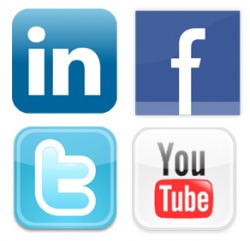For anyone who looks to the Internet for socializing, discussing personal and professional ideas, and building a network of real and virtual connections, there are plenty of sites to keep one engaged for hours a day. It's a fact: Facebook, YouTube, Flickr, and Second Life, among other social media sites, suck the life out of life sometimes. Now, studies about the black hole of virtual socializing from OSU and UNH are sending educators, administrators, and even students mixed messages about the real-life implications of time spent in a virtual world.
So, does social media help or hurt students? Is social media a time suck, or is it the answer to collaboration and communication restrictions? It all depends on how students use social networking, and of course, on whom you ask.
Take, for example, this Edutopia poll, where readers were asked if they believed social media helped or hindered learning. Several responses supported the view that technology is important in today's learning environments, yet the face-to-face experience of discussing and interacting with peers must not disappear just because technology has made communicating via phones and computers so easy.
The most difficult part of using social media may be the ability to stop and listen, then think, before responding. Twitter discussions may not be the best place to try and engage deep conversations. Just try to keep up during an #edchat session! Social media is, after all, self-centered and narcissistic, but that doesn't mean that education can't take advantage of bringing people (students, professors, professionals) together who want to talk about their experiences and opinions on a given subject matter. Social media goes hand-in-hand with education because education has a social core. For real-life learning to occur, social concepts of cooperation and compromise, as well as being able to express ideas and thoughts to a group of people, are required.
One crucial component of using social media in the classroom is to make sure the medium reflects the amount of depth that questions require. For example, use Twitter for quick, to the point answers, or wikis to examine longer questions with layers of opinions. Facebook and MySpace can be used for interactive conversations on specific interests or application-worthy discussions. YouTube can be used for video responses that illicit even shorter written responses as comments from viewers. Second Life and Flickr can be used for those students who need visual illustrations to accompany conversations.
Obviously, the uses of social media in educational conversations are boundless, but in the end, what really matters is not how much students say, but what they say using technology.
So, does social media help or hurt students? Is social media a time suck, or is it the answer to collaboration and communication restrictions? It all depends on how students use social networking, and of course, on whom you ask.
Take, for example, this Edutopia poll, where readers were asked if they believed social media helped or hindered learning. Several responses supported the view that technology is important in today's learning environments, yet the face-to-face experience of discussing and interacting with peers must not disappear just because technology has made communicating via phones and computers so easy.
The most difficult part of using social media may be the ability to stop and listen, then think, before responding. Twitter discussions may not be the best place to try and engage deep conversations. Just try to keep up during an #edchat session! Social media is, after all, self-centered and narcissistic, but that doesn't mean that education can't take advantage of bringing people (students, professors, professionals) together who want to talk about their experiences and opinions on a given subject matter. Social media goes hand-in-hand with education because education has a social core. For real-life learning to occur, social concepts of cooperation and compromise, as well as being able to express ideas and thoughts to a group of people, are required.
One crucial component of using social media in the classroom is to make sure the medium reflects the amount of depth that questions require. For example, use Twitter for quick, to the point answers, or wikis to examine longer questions with layers of opinions. Facebook and MySpace can be used for interactive conversations on specific interests or application-worthy discussions. YouTube can be used for video responses that illicit even shorter written responses as comments from viewers. Second Life and Flickr can be used for those students who need visual illustrations to accompany conversations.
Obviously, the uses of social media in educational conversations are boundless, but in the end, what really matters is not how much students say, but what they say using technology.

 RSS Feed
RSS Feed





